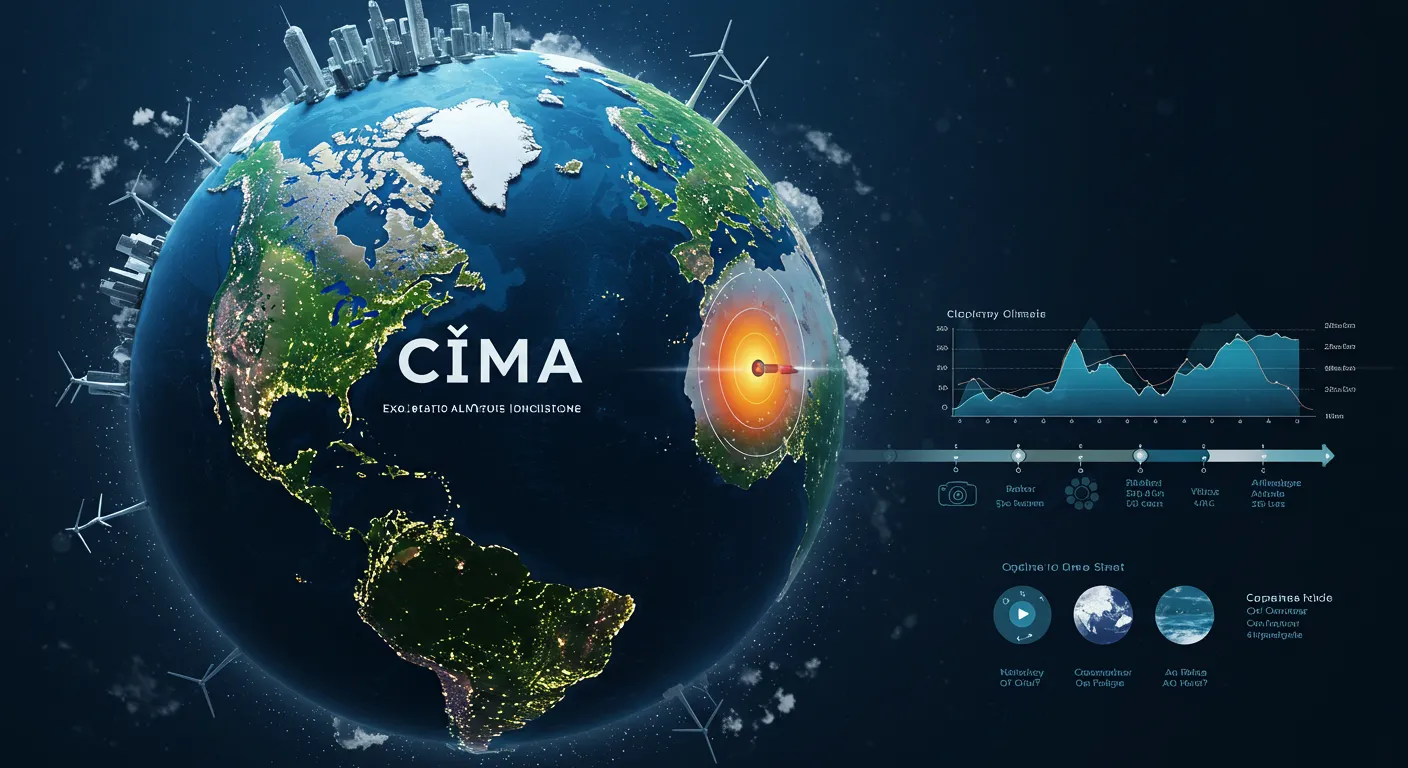Table of Contents
The term “cñima” may appear unfamiliar at first glance, but it closely echoes the word “climate,” which translates to “climate” in several Romance languages, including Spanish and Italian.
In today’s interconnected world, climate is more than just a topic for meteorologists—it shapes economies, influences lifestyles, and even defines the mood or “atmosphere” of societies.
This article delves into the multifaceted idea of cñima, exploring its scientific meaning, cultural significance, and the methods it impacts our daily lives and future.
What Is Cñima? Defining the Concept
Scientific Perspective
Cñima, or climate, refers to the long-term patterns of weather that characterize a specific region. Unlike weather, which describes short-term atmospheric conditions, explore the impact of cñima on our daily lives and future by understanding.
How it encompasses the average and variability of key elements such as temperature, precipitation, humidity, wind, and atmospheric pressure over periods typically spanning 30 years or more. This long-term perspective is crucial for understanding environmental trends and planning for the future.
“Climate is the long-term weather pattern in a part, typically averaged over 30 years. More rigorously, it is the mean and variability of meteorological elements over a period ranging from months to thousands or millions of years.”
Cultural and Figurative Meaning
Beyond meteorology, cñima also signifies the prevailing mood, spirit, or atmosphere within a community or organization. For example, one might refer to the “economic cñima” to describe the general business environment or the “social cñima” to capture the mood of a population during times of change.
The Elements That Shape Cñima
Meteorological Components
The scientific study of cñima involves several key atmospheric elements:
- Temperature: The average and range of heat in a region.
- Precipitation: The type, frequency, and amount of rainfall or snowfall.
- Humidity: The moisture content in the air.
- Wind: Patterns, speed, and direction.
- Atmospheric Pressure: The weight of the air above a given point.
These elements interact in complex ways, influenced by geography, ocean currents, altitude, and human activity, to create the unique cñima of every location.
Also Read: Anon Vault: The Ultimate Guide to Anonymous Data Storage & Security
Human Factors and Modern Influence
In recent decades, human activity has become a significant driver of cñima change. Urbanization, deforestation, and the emission of conservatory gases have led to shifts in global and regional climates, with far-reaching consequences for ecosystems and societies.
Types of Cñima Around the World
Cñima varies dramatically across the globe, resulting in diverse environments and lifestyles. Some common types include:
- Tropical Cñima: Hot and humid, with abundant rainfall (e.g., Amazon Basin).
- Arid Cñima: Dry, with little precipitation (e.g., Sahara Desert).
- Temperate Cñima: Moderate temperatures and rainfall, with four distinct seasons (e.g., Western Europe).
- Polar Cñima: Extremely cold, with long winters (e.g., Antarctica).
Each cñima type shapes the natural vegetation, animal life, and human activities in its region.
The Broader Impact of Cñima
On Business and Economy
The economic cñima of a region can determine the success or failure of businesses. Favorable cñima fosters investment and growth, while uncertainty or instability can hinder development. For example, a positive economic cñima might encourage startups, while a harsh one could slow innovation.
On Lifestyle and Health
Cñima influences daily routines, fashion, diet, and even mental health. In regions with harsh winters, people adapt by developing unique cultural practices and architectural styles. Conversely, tropical cñima encourages outdoor activities and lighter clothing.
On Culture and Society
The figurative use of cñima is prevalent in discussions about societal mood or political atmosphere. A tense cñima in a workplace or nation can affect productivity, creativity, and overall well-being. Leaders and policymakers often strive to improve the social cñima to foster harmony and progress.
Cñima Change: Challenges and Opportunities
Global Warming and Its Consequences
One of the most pressing issues today is the rapid change in global cñima due to human-induced global warming. Increasing temperatures, melting glaciers, and extreme weather events are reshaping ecosystems and threatening livelihoods worldwide.
Adaptation and Innovation
Communities and industries are responding to cñima change with innovative solutions. Renewable energy, sustainable agriculture, and green infrastructure are just a few examples of how societies are adapting to new cñima realities.
The Role of Technology
Advancements in technology, such as climate modeling and satellite monitoring, allow scientists to better understand and predict cñima trends. These tools are essential for disaster preparedness, resource management, and policy-making.
Cñima in Everyday Language and Media
Cñima is not only a scientific term but also a powerful metaphor in media and everyday conversation. Journalists describe the “political cñima” to capture the mood of a nation, while business leaders assess the “market cñima” before making investments. This dual usage underscores the importance of cñima as both a physical reality and a reflection of collective sentiment.
Real-World Examples of Cñima in Action
- Economic Cñima: During the global financial crisis, the economic cñima was characterized by uncertainty and caution, affecting consumer behavior and business strategies.
- Social Cñima: In times of national celebration or crisis, the social cñima can shift rapidly, influencing public discourse and policy decisions.
- Environmental Cñima: Regions experiencing prolonged droughts or floods must adapt their agricultural practices to the changing environmental cñima.
Closing Words
Cñima is a concept that transcends weather reports and scientific journals. It is a dynamic force shaping the natural world, economies, cultures, and even the collective mood of societies.
Understanding cñima—both as a physical phenomenon and a metaphor for atmosphere—empowers individuals, businesses, and policymakers to make informed decisions in an ever-changing world.
As we face the challenges of cñima change, fostering awareness and adaptability will be key to building a resilient and thriving future.

